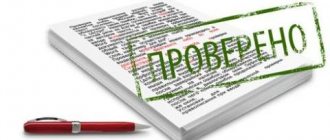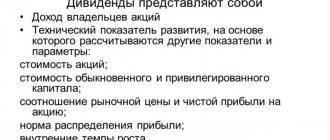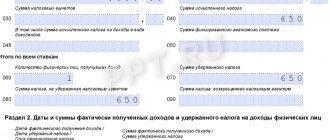Any control involves carrying out a number of activities to determine the degree of compliance with current legislation, rules, regulations, and requirements. Tax control, first of all, is aimed at preventing entrepreneurs from incorrectly paying obligatory payments to the state budget. By checking all types of resources of organizations, paying special attention to cash flow, persons authorized to carry out inspections carry out a number of legally defined actions.
Let's consider what purpose tax control measures are pursued, what they are, how the main measures differ from additional ones, and what the result is in the end.
What are tax control activities?
Taxes are a sphere of state interests. It is the state that sets the laws and rules of taxation, and it also controls their implementation.
The Tax Code has been adopted and is in force in the Russian Federation, as well as some other provisions relating to the payment of taxes and fees that are mandatory for entrepreneurs and organizations.
Tax control activities are a set of actions by tax officials, regulated by the Tax Code of the Russian Federation (clause 1 of Article 82 of the Tax Code of the Russian Federation), which is carried out with the aim of verifying compliance with tax legislation and international tax provisions in relation to:
- tax agents;
- individual payers of taxes and fees;
- payers of insurance and social contributions.
NOTE! The scope of tax control activities is on-site tax audits and consideration of their materials. In some cases, specified in the Tax Code of the Russian Federation, some measures can be carried out outside of inspections by tax authorities.
Expected changes in legislation
The only grounds for canceling a decision by a tax official can be violations of the conditions for reviewing tax audit materials, which include:
- failure to provide the taxpayer with the opportunity to take part in the consideration of the case materials, both personally and through his representative;
- failure to provide the taxpayer with the opportunity to provide explanations.
Currently, the State Duma is considering bill No. 249505-7, according to which tax authorities will have to draw up an act based on the results of additional measures. In this case, the taxpayer will have the opportunity to freely familiarize himself with the act and submit his written objections. It is also believed that such a bill will allow tax authorities to make a more objective decision on the results of an audit.
Such an act will have to contain the start date and end date of additional measures and show the essence of the offense. Such a certificate must be handed over to the taxpayer within 5 days from the date of completion of additional measures. Tax authorities will not attach all documents that were submitted by the taxpayer himself to the report. The act must be transferred to the taxpayer against receipt, or in another way, but on the condition that the payer confirms its receipt.
If the taxpayer evades receiving such a report, tax authorities can send it by registered mail to the individual.
In addition to the above, this bill should reduce the time frame for conducting desk audits. Let us remind you that today the term of the “camera chamber” is 3 months. It is proposed to reduce it to one month.
Thus, having come under an on-site inspection by the tax authorities, the taxpayer organization, it is important to control the timing of this procedure. When prescribing additional measures, the person being inspected must provide the required documents and not resist other measures. Due to the fact that the tax office is currently not obliged to provide the audited person with a report on additional measures, the taxpayer must independently express a desire to familiarize himself with the results of additional measures. If the auditee is not satisfied with some aspects of the result of the measures, he can file a tax objection. The main thing is that relevant evidence be attached to this objection.
The purpose and objectives of tax control measures
main goal follows - the identification and prevention of offenses regarding the Tax Code of the Russian Federation, and if detected, ensuring the responsibility regulated in the Tax Code. In other words, the purpose of tax control measures is to ensure tax discipline. The following tasks are aimed at achieving this goal:
- promoting economic state security;
- participation in control of the formation of state revenues;
- checking the fulfillment by an entrepreneur or organization of tax obligations to the state;
- monitoring the targeted application of tax benefits;
- suppression and prevention of tax offenses;
- punishment of offenders under the Tax Code of the Russian Federation.
The concept of an on-site tax audit and the procedure for conducting it
An on-site tax audit is one of the main ways of monitoring and accounting for the existing taxation procedure of certain bodies, as well as individuals who are individual entrepreneurs, at their immediate location.
An on-site tax audit is carried out in strict accordance with the basic requirements and norms established by the current Tax Code of the Russian Federation, violations of which are unacceptable, as there is a risk of cancellation.
Its results, grounds, effectiveness, consequences and actions will be considered fully legitimate only if the established procedure and criteria have been followed, and all control measures have been carried out without a single violation, risk or objection, within the prescribed period.
On-site tax audit and analysis, as a legal procedure, has one main essence - ensuring maximum control over the taxation procedure provided for by the Tax Code of the Russian Federation, as well as checking taxpayer documents, risks, their analysis, selection, drawing up an objection and other necessary actions of the tax service.
To answer the question of how an on-site tax audit and support at the location of legal bodies or individuals takes place, you should refer to the provisions of the current Tax Code of the Russian Federation.
On-site tax audits and support are carried out exclusively by authorized persons who, during this event, check, select and analyze documents related to the process of calculating taxes of individuals or legal entities for a certain period, for example, when a reorganization was underway. Then the main document for verification will be the declaration.
The constituent documents of bodies, certificates, orders, various forms and types of accounting statements, tax returns, invoices, the procedure for filling them out, possible violations, the object of taxation, risk, objections and other criteria of the enterprise, for example, reorganization and the competence of its implementation, are checked.
The conduct of an on-site tax audit and the established procedure allow that at this time various additional measures and actions can be carried out if such a need is present.
These activities may consist of sending written requests to foreign authorities for tax information, drawing up requests from the manager to the bank, calculating risks and other actions.
The reorganization of a person, for example, an LLC, is also a basis for conducting an inspection. In this case, the LLC must receive a notification and a completed document indicating the purpose of the inspection, the risk, and other information.
During the audit of the LLC, the updated tax return, the property, the reasons for which the LLC is being reorganized, a possible extension, risk and other information will be examined.
An updated declaration is a document with amendments made. The updated declaration for the object of taxation of the LLC is submitted again to the tax authority. The declaration is the most important tax document, the risk of which is filled out incorrectly is very high.
What can be revealed as a result
Based on the results of tax control, the auditing authorities record the identified results. They may be:
- facts of violations of the Tax Code of the Russian Federation;
- arrears, that is, incomplete or missing tax accruals;
- failure to timely pay required fees;
- incorrect calculation of required payments;
- discrepancy between the income and expenses of the person being audited;
- improper documentation of tax payments (declarations).
Registration of the results of additional measures
There is no specific procedure by which tax authorities should send materials on additional measures. The Tax Code also does not provide for a procedure for documenting the results of such events, that is, drawing up any act or certificate.
However, Article 101 of the Tax Code of the Russian Federation provides for the taxpayer’s right to familiarize himself with the materials of both the audit itself and additional measures related to it. In other words, the tax office must ensure the implementation of such a right and do this within two days from the moment the taxpayer submits the relevant application. The familiarization process occurs through visual examination of extracts, copies and other materials on the territory of the tax authorities.
After reviewing the inspection materials, a protocol is drawn up in the form specified in the appendix to Letter No. CA-4-9/ [email protected]
Main tax control activities
Employees of the Federal Tax Service of the Russian Federation, relying on the Tax Code, as part of inspections can carry out a number of activities regulated by law:
- Inventory (carried out in accordance with clause 13 of Article 89 of the Tax Code of the Russian Federation) - reconciliation of data in the documentation with their real basis (assets).
- Inspection (regulated by Articles 91, 92 of the Tax Code of the Russian Federation) - any territory or premises that the inspected entrepreneur or organization uses to generate income (offices, workshops, workshops, warehouses, shops, etc.) can be subject to it.
- Request for documents and/or information (Articles 93, 93.1 of the Tax Code of the Russian Federation) - papers required for inspection can be officially requested from the company or person being inspected.
- Seizure of objects and documents (based on Article 94 of the Tax Code of the Russian Federation) is carried out when evidence is needed to confirm a tax violation.
- Expertise (according to Article 95 of the Tax Code of the Russian Federation) is carried out only in necessary cases; a competent specialist is invited under the contract. If he has established facts that are important for the results of tax control, they are formalized in an official expert opinion , the receipt of which is an independent measure of tax control. It may also include the expert’s own conclusions, even if they were not included in the request for examination.
- Any individual can be summoned as a witness This measure is necessarily followed by the next one - interrogation .
- The involvement of a translator (Article 97 of the Tax Code of the Russian Federation) is permitted in cases where it is necessary to solve pressing tax control problems. Carried out on a contractual basis.
IMPORTANT INFORMATION! Persons carrying out tax control have the right, approved by law, to use various technical means to record facts identified as a result of an audit: photography, film or video recording, audio recording, copying equipment, etc. The use of technical support for control must be reflected in its documentary support ( inspection protocols).
Objection to tax authorities
After additional measures have been taken within ten days, the taxpayer has the right to submit an objection to the tax authorities based on their results. Such an objection is sent in writing and contains comments on all or some of the results. Copies of documents that substantiate the taxpayer’s arguments are attached to the objection.
Such objections are considered by tax authorities before making the main decision on the on-site audit. If the objection contains objective reasons, the tax authorities may postpone consideration of the audit materials (
Additional tax control measures
It happens, and often, that the materials collected during the inspection itself are not enough to make a conclusion. Clause 6 Art. 101 of the Tax Code of the Russian Federation allows tax authorities in such situations to resort to additional measures that should serve as confirmation or refutation of the identified fact.
IMPORTANT! Additional measures should not seek out new facts, but only clarify those already reflected in the protocol.
The form of implementation of additional tax control measures may be:
- interrogation;
- expertise;
- requesting documentation.
Tax authorities are not authorized to carry out any other additional activities. But during one inspection, several of the measures described above can be prescribed at once; the law does not limit their number.
The object of the inspection (entrepreneur or representative of the organization) will be informed about additional measures either during the consideration of the inspection materials or after its completion: they will be handed a decision on additional measures, drawn up according to the rules established by order of the Federal Tax Service of the Russian Federation dated May 8, 2015 No. ММВ-7-2/ [ email protected] This decision, which is not final but interim in nature, must indicate:
- justification – what caused the need for additional control measures;
- selected additional measures (list of forms);
- timing (final date).
The maximum duration of additional measures should not exceed 30 days; only for consolidated taxpayers, in exceptional cases, the period can be extended to 2 months (clause 6 of Article 101 of the Tax Code of the Russian Federation).
Analysis of materials from additional measures
Materials obtained during additional measures are added to the general tax audit materials. The same legal requirements apply to them as to the main ones, that is, the taxpayer has the right to take part in their consideration. To do this, he must express such a desire by submitting a corresponding application to the tax office. In 2 days, the tax authorities will announce the date of consideration.
NOTE! Inviting a taxpayer to review tax audit materials is mandatory at every stage - both after the main and after additional events. The absence of such notification is a gross violation of the verification procedure.
If the taxpayer has objections to the results of studying the materials, he can provide them in writing, setting out his views, supported by relevant documents. To do this, he has a ten-day period, starting from the date of completion of additional measures specified in the tax decision. Previously, this process was not regulated, but now it is legalized by Federal Law No. 130 of May 1, 2016.
Features of conducting on-site tax audits
The existing concept of the planning system for on-site tax audits is aimed, first of all, at compliance with the norms of the Tax Code of the Russian Federation and protecting the interests of taxpayers - individuals or legal entities.
The effectiveness of this concept, as well as its foundations, goals, objectives, consequences and evaluations, is confirmed by existing practice.
A specified on-site tax audit, support, selection and control, without fail, are carried out on the territory of the taxpayer and his enterprise. In some cases, it can be carried out at the location of the tax office. The corresponding decision of the manager, where this updated information is compiled, is made within the prescribed period.
During the verification of taxpayers and the selection of documents, each of them can be checked for several taxes.
The direct subject, object and purpose of an on-site tax audit are expressed in monitoring the correctness of tax calculations, checking risks, as well as the timeliness of payment of established taxes on an object.
Control, registration and support of an on-site audit can only extend to a certain period of activity of a particular organization or other taxpayers. This period is three years.
At the end of the inspection, a special notification document is always drawn up - an on-site inspection report from the tax service. The on-site inspection report contains all the necessary information about the implementation of this control measure, as well as about the result obtained.







